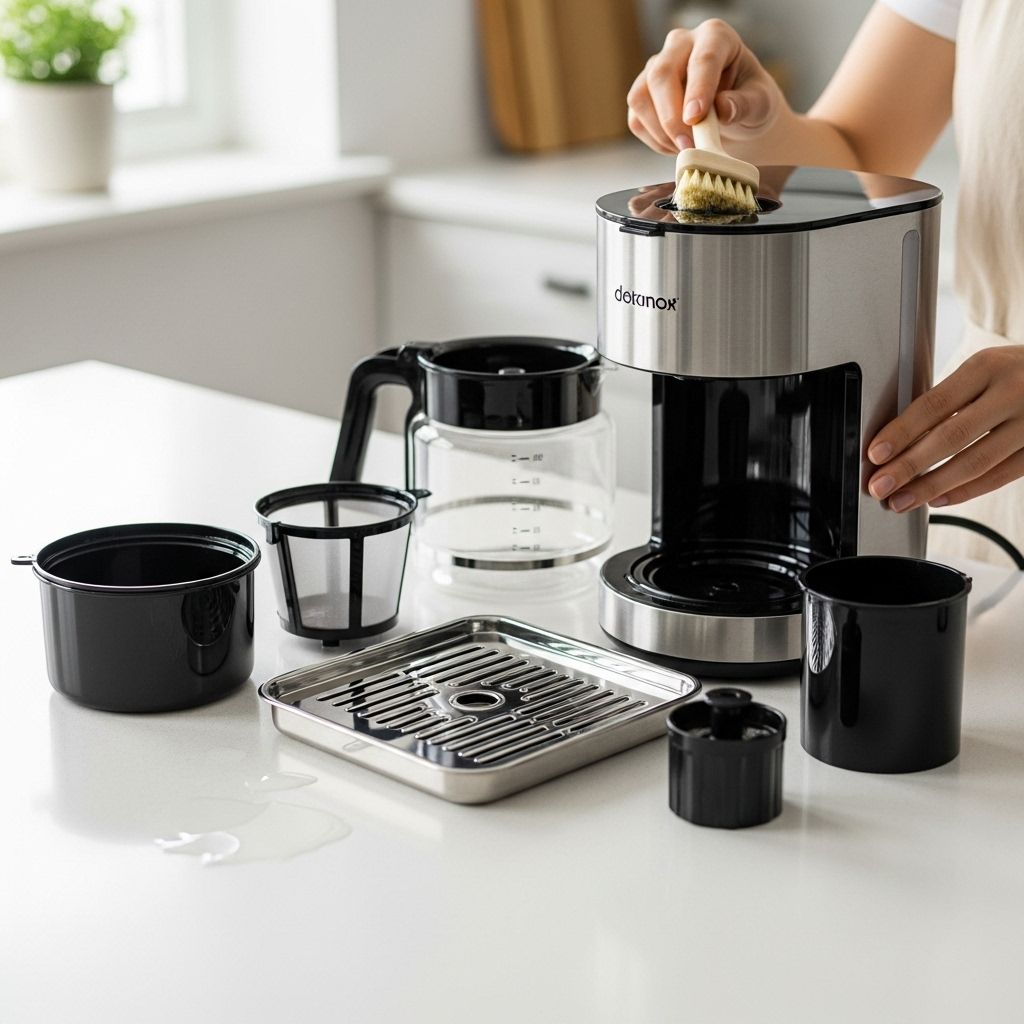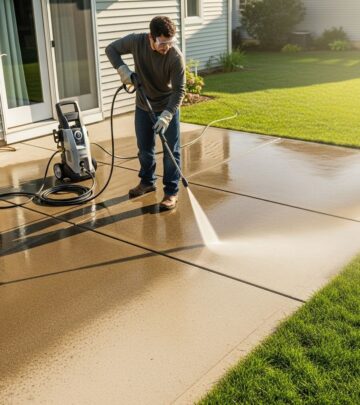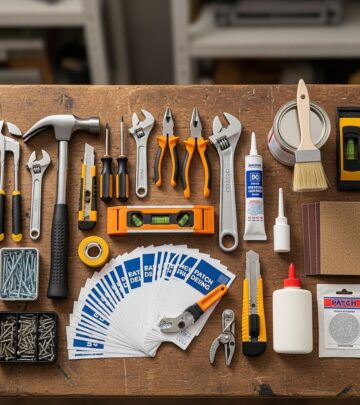How To Clean A Coffee Maker: Complete Guide For A Fresher Brew
Spark your mornings with spotless gear and enjoy irresistibly smooth, aromatic cups!

Image: HearthJunction Design Team
How to Clean Your Coffee Maker: A Step-by-Step Guide for a Fresher Brew
Coffee lovers know that the best brews come from machines that aren’t just high-quality but also well-maintained. Over time, coffee makers become breeding grounds for mineral buildup, residual oils, and even mold if not properly cleaned. In this comprehensive guide, we’ll walk you through the essential steps, methods, and tips for cleaning various types of coffee makers, so you can enjoy better tasting coffee and extend the life of your favorite morning machine.
Why You Need to Clean Your Coffee Maker
Most people rinse or wash their coffee pot, but few realize that the inside of the machine harbors leftover oils, hard water deposits, and sometimes, bacteria and mold. This residue impacts the flavor of your coffee and can even cause your brewer to malfunction over time. Regular cleaning ensures every cup is as fresh and flavorful as possible while keeping your appliance in top shape. Studies and expert recommendations highlight that a clean machine will not only make better coffee but also last longer.
How Often Should You Clean Your Coffee Maker?
Frequency depends on your coffee habits and water quality, but as a rule of thumb:
- After Every Use: Wash the carafe, removable filter, and any detachable parts with warm soapy water to remove coffee oils and grounds.
- Once a Month (Deep Cleaning): Run a cleaning cycle or descale your machine to eliminate mineral buildup and lingering residue.
- Check Manufacturer Instructions: Some machines feature a cleaning indicator light or recommend a specific cleaning frequency based on use and model.
For heavy use or hard water areas, you may need to clean more frequently. Refer to your coffee maker’s manual for the best guidance.
What You’ll Need to Clean Your Coffee Maker
- Distilled white vinegar
- Water
- A soft sponge or cloth
- Baking soda (optional for stubborn stains)
- Dish soap
- Paper towels or clean dish towels
- A toothbrush or small brush for scrubbing hard-to-reach areas
Step-by-Step: How to Clean a Drip Coffee Maker
- Empty and Rinse
Remove the carafe and filter basket. Discard any used coffee grounds and rinse all removable parts under warm water. Wash with dish soap if necessary. - Descale with Vinegar Solution
Fill the reservoir with a 1:1 mixture of distilled white vinegar and water. For example, use one cup of each for a small coffee maker, or adjust based on the size of your reservoir.- Vinegar naturally breaks down mineral buildup and disinfects the inner components.
- Run a Brew Cycle
Start a brew cycle as if you’re making coffee (without grounds). Halfway through, turn off the machine and allow the solution to sit for 30–60 minutes, allowing the vinegar to penetrate mineral deposits and oils. - Complete the Cycle
Turn the machine back on and finish brewing the rest of the solution. - Rinse with Fresh Water
Discard the vinegar solution. Fill the reservoir with clean water and run 2–3 brewing cycles to flush out any vinegar taste or odor. Make sure to use fresh water each time. - Clean Removable Parts
Wash the carafe, filter basket, and any removable components with warm soapy water. Scrub any stubborn stains using a sponge or brush. - Wipe Down the Machine
Use a damp cloth to wipe the exterior, heating plate, and other parts that collect spills or coffee drips. - Final Touches
Dry all the parts and reassemble your clean coffee maker. Your next brew will taste noticeably fresher!
How to Clean Single-Serve & Pod Coffee Makers
Single-serve machines (like Keurig or Nespresso) require similar maintenance, but pay extra attention to small components and reusable pods:
- Remove Used Pods & Accessories
- Run a Vinegar & Water Cycle
Fill the reservoir with a 1:1 mixture of white vinegar and water, then brew cycles without a coffee pod until the reservoir is empty. - Rinse Thoroughly
Fill the reservoir with clean water and run brewing cycles until all traces of vinegar are gone. - Clean Removable Parts
Wash pod holders, drip trays, and water reservoirs with soapy water. Use a brush to reach inside the pod holder area where grounds and oils may collect.
Cleaning Cold Brew and Specialty Coffee Makers
Cold brew systems, French presses, and espresso machines also need regular cleaning. Here’s how:
- Cold Brew Coffee Makers:
- Disassemble all parts (carafe, mesh filter, lid) and wash with warm soapy water.
- For stubborn stains or odors, soak parts in a solution of vinegar and water or sprinkle baking soda onto a sponge for targeted scrubbing.
- French Press:
- Disassemble the plunger and filter, wash each part, and scrub thoroughly to remove oils.
- Espresso Machines:
- Follow the manufacturer’s instructions for descaling with a commercial descaler or vinegar solution. Pay attention to group heads and steam wands, using a brush to remove milk residue.
Extra Tips for a Clean Coffee Maker
- Use Filtered Water: Reduces mineral buildup and extends the time between descaling cycles.
- Let Parts Air-Dry: After washing, allow the carafe and filter basket to air-dry before reassembling to prevent mold and musty odors.
- Check for Cleaning Cycles: Some coffee makers have a dedicated cleaning or descale function—take advantage of it if available.
- Don’t Neglect the Exterior: Wipe down buttons, knobs, and the water reservoir lid regularly.
- Replace Worn Parts: If reusable filters or carafes become stained beyond cleaning, consider replacing them for optimal taste and hygiene.
Common Mistakes to Avoid
- Neglecting regular cleaning: Don’t wait until you see buildup—make cleaning part of your monthly routine.
- Forgetting removable parts: Always clean drip trays, reservoirs, filters, and pods where buildup easily develops.
- Using harsh chemicals: Stick to vinegar, water, and mild soap. Avoid bleach or abrasive cleaners that can damage your coffee maker.
- Ignoring manufacturer guidance: Each machine is different. Always check your guide for the safest and most effective cleaning method.
Choosing an Easy-to-Clean Coffee Maker
If you’re shopping for a new machine, look for models with dishwasher-safe parts, wide-mouthed reservoirs for easier scrubbing, and built-in cleaning alerts or cycles. These features help reduce maintenance time and keep your coffee tasting great with minimal effort.
Quick Cleaning Reference Table
| Type of Coffee Maker | Daily Cleaning | Monthly/Deep Cleaning |
|---|---|---|
| Drip Coffee Maker | Wash carafe & filter basket | Descale with vinegar solution |
| Single-Serve/Pod | Clean pod holder & drip tray | Descale with vinegar or descaling solution |
| Cold Brew | Wash all removable parts | Soak in vinegar solution if needed |
| French Press | Disassemble and wash all parts | Use baking soda for tough stains |
| Espresso Machine | Wipe group head & steam wand | Descale per manufacturer’s instructions |
Frequently Asked Questions (FAQs)
How often should I clean my coffee maker?
Wash removable parts after every use and perform a deep cleaning or descale at least once a month. Machines used heavily or in hard water areas may need more frequent maintenance.
Is it safe to clean my coffee maker with vinegar?
Yes, distilled white vinegar is safe and effective for removing mineral deposits and sanitizing your machine. Always rinse thoroughly with water after cleaning to remove any vinegar odor or taste.
Can I put coffee maker parts in the dishwasher?
Many carafes, filter baskets, and removable reservoirs are dishwasher safe, but always check your instruction manual first to avoid damaging sensitive parts.
What if my coffee maker has a cleaning or descaling button?
Use it! These automated cycles are designed to maximize cleaning efficiency. Add your cleaning solution as directed and follow the machine’s instructions.
How do I prevent mold in my coffee maker?
Always allow removable parts to air-dry before reassembling, clean regularly, and avoid leaving used grounds sitting in the filter basket overnight.
Can I use something other than vinegar?
Commercial descaling solutions are available if you prefer an alternative to vinegar. Baking soda can help with stubborn stains on removable parts but isn’t recommended for descaling.
The Takeaway: A Clean Machine Equals Better Coffee
Regular coffee maker maintenance is the secret to better-tasting coffee and a longer-lasting machine. By working cleaning into your routine and following the step-by-step instructions above, you’ll eliminate lingering residue, prevent buildup, and enjoy a delicious cup every time. Don’t wait until your machine signals trouble—make cleaning a habit for fresher, healthier coffee, day after day.
References
- https://www.instagram.com/hgtv/p/Cp01hz8p1Ib/
- https://www.youtube.com/watch?v=oGpNrp4S5CM
- https://www.consumerreports.org/appliances/coffee-makers/how-to-clean-your-coffee-maker-a9071238280/
- https://www.bhg.com/homekeeping/house-cleaning/tips/how-to-clean-a-coffee-maker-281474979530476/
- https://www.mrcoffee.com/blog/how-to-clean-your-coffee-maker-the-easy-way.html
Read full bio of medha deb










